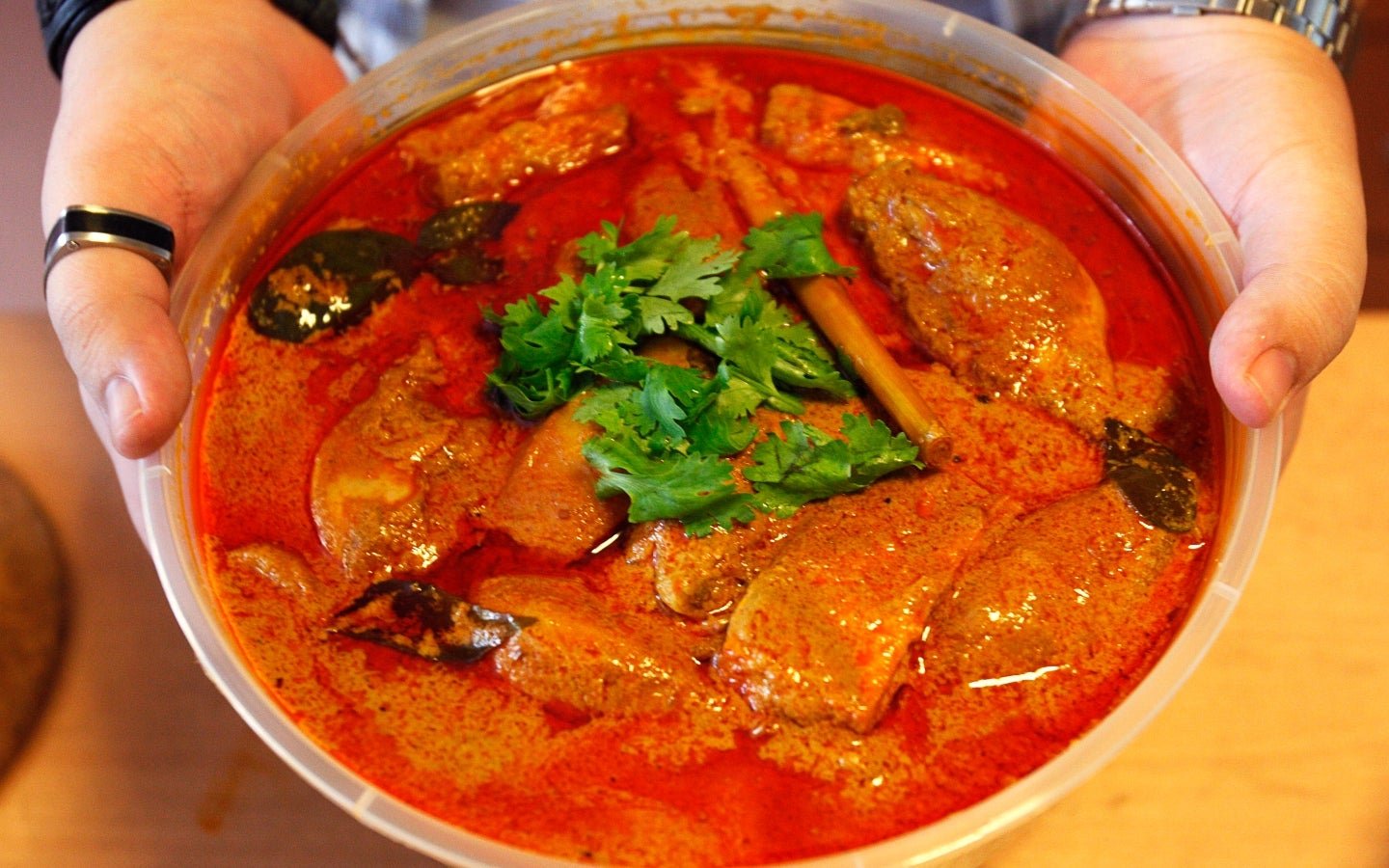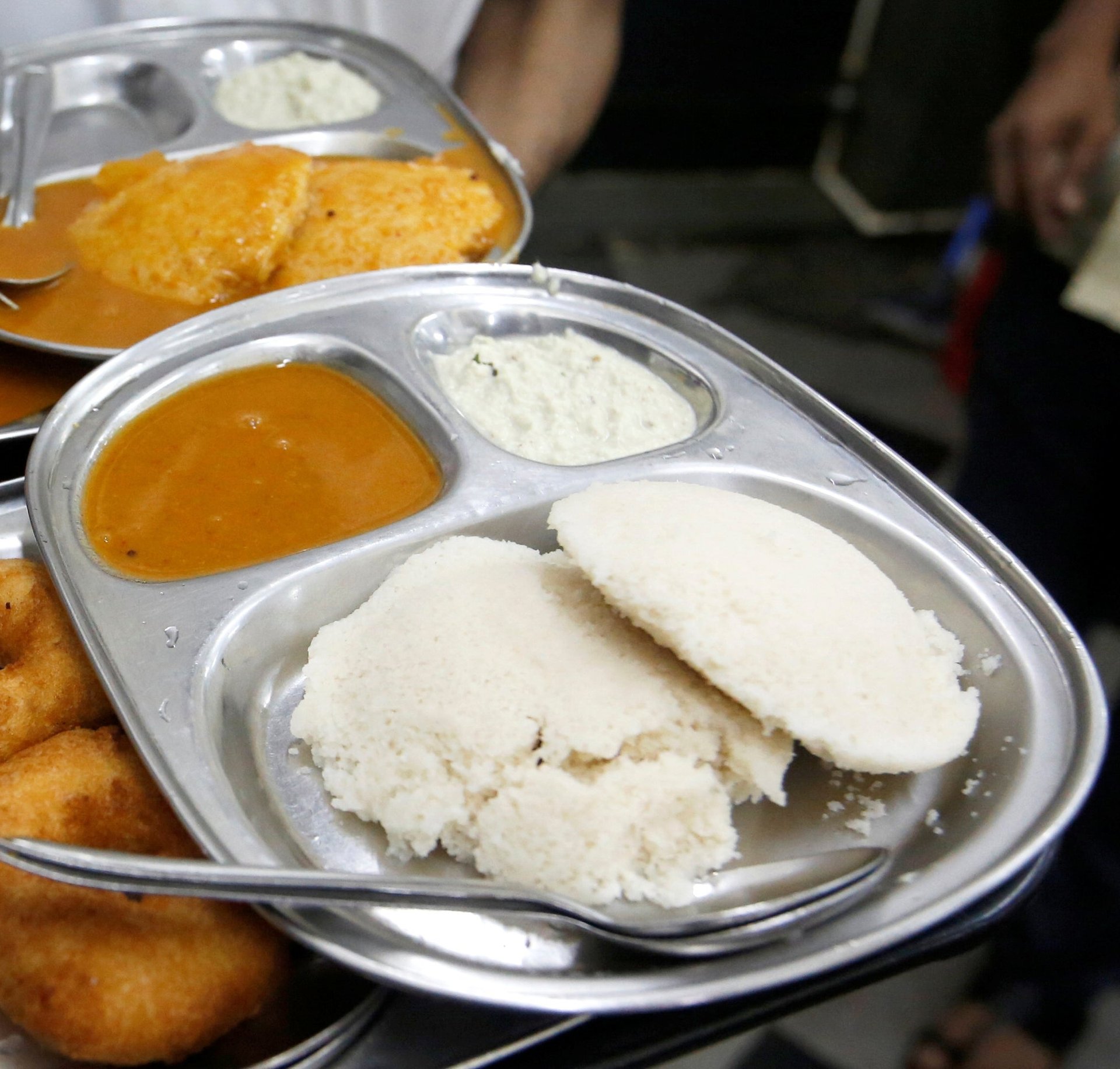Culinary confessions: At times “Indian food” can completely put off Indians themselves
Food is personal. Sometimes it is national.


Food is personal. Sometimes it is national.
Not in India, though, given our many sub-nationalities and the many cuisines, ranging from the rich Punjabi fares from the north to the supposedly healthy breakfasts of Kerala in the south. Yet, “Indian food” seems to be a thing.
We don’t know how people outside the country develop a taste for something as spectacularly imaginary as “Indian food.” But then, we also talk about the breed called honest politician. So yeah.
The past two days have seen something of a storm, especially in the Indian Twitterverse, after Tom Nichols, a teacher at the US Naval War College in Rhode Island, posted his views on the subject.
He backed that up with a more snarky one:
Nichols may or may not have based his views on authentic culinary fares from India, or even south Asia, but that is irrelevant. Culinary tastes can vary even within the country, leave alone across the world.
Can anyone claim that everyone in India likes every Indian cuisine and dish? Unlikely. So we at Quartz decided to bring out our own shortlist of Indian dishes, condiments, and snacks we abhor.
Sandesh
Earlier this week, comedian Hasan Minhaj sparked a minor row, saying “Indian sweets are waaayyyy too sweet.” I think I high-fived my laptop when I watched that clip on YouTube. And I have one specific condiment to pick a bone with: sandesh.
Ok, I don’t have to like just because I’m Bengali. And no, I don’t need to try “that specific one with the syrup inside” (yuck) or the rose cream one (ew) or the chocolate one (I’ll just have a Cadbury’s Dairy Milk, thanks). There are no redeeming qualities to sandesh. It’s sticky, it’s also dry, and it’s 20 times sweeter than any confection to be.
The worst part is no one shows me any solidarity. It’s only me versus sandesh. So be it. The battle rages on.
—Ananya Bhattacharya, writer
Aaloo ghosht
Who doesn’t love a juicy portion of mutton? And who doesn’t love good old, versatile potatoes? But bring these two together and you have something of an abomination, even if a well-loved one. Aaloo ghosht (mutton curry with potatoes) forms the heart of most elaborate Bengali meals, much to the perplexity of flavour- and consistency-loving north Indians.
Growing up in a home with an uncle in the army, “masala meat” meant a thick, brown curry with succulent pieces of mutton, cooked with Indian spices like round pepper, black cardamom, and cloves. It was mutton curry that satiated the umami taste buds. And on masala meat days, one was allowed to ditch the humble roti for slices of store-bought white bread.
However, adulthood changed everything. After much insistence from Bengali friends, I braved the aaloo ghosht that a classmate had brought to college for lunch.
There it was, some pieces of mutton swishing around in a watery curry, with red chilli powder and pieces of boiled potatoes floating on the top. The very bourgeoise Tupperware container did nothing for the overall aesthetic. Not one to judge first appearances, I dug in with a piece of luchi (fried flatbread).
Gag is a strong word, so I’ll simply say I did not like it. One bit.
In case you look up what aloo ghosht looks like, don’t be deceived by those glistening photos on the internet. The home-cooked, “comfort” version is nothing like what it’s advertised to be.
—Manavi Kapur, writer
Aaloo methi
There are many inventions in human history that ensured that alien races of the universe never bothered to visit us: the H-bomb, social media influencers, foot masks, needlessly confusing marks of punctuation (I’m looking at you, semicolon).
None of these can usurp the top position of that list from the devious aaloo methi. For the uninitiated, it is a staple north Indian dish made of two simple ingredients: potato and fenugreek.
So what do you get when you take something bland and something bitter, mix it all up, and decided to call it a “dish”? Aaloo methi is what.
Every cook in every Indian household will extoll its virtues: The fibre! The greens! The intrinsic medicinal value!
But I yell “nay” in the face of this culinary betrayal—every bite a battle for your taste buds’ survival, a crusade to restore sanity in a world turned upside down.
—Sanaya Chandar, intern
Baingan bharta
The one Indian dish that I deeply dislike is baingan bharta. The key ingredient here is eggplant, roasted and peeled. Growing up, whenever the round, purple vegetable got roasted, our home would fill up with smoke and burning smell. So no matter how appetising the final was, it only reminded me of an ugly-looking eggplant slowly turning black and squishy in the flames. In any case, the final dish is only mashed eggplant with tomatoes and onions. It even looks unappetising, being yellow and orange in colour.
—Amanat Khullar, news curator and writer
Kolkata biriyani
Once during college, my Bengali roommate, returning after holidays, texted me saying he was getting me a box of mutton biriyani from Arsalan. I’d never had Kolkata biriyani before, and he was bringing only two boxes, one of them for me. I felt special.
Having lived a few years in Lucknow, I hold a deep admiration for biriyani. Not to forget Hyderabadi biriyani, of course. (Like Ellen with Trump, I choose not to give vegetarian biriyani even a platform.)
But Kolkata biriyani? Come on. Boiled rice with a boiled egg, a boiled potato, and mutton that could best be described as…boiled—was this what the cool kids were constantly raving about? Feet of mush, you could say.
I made the polite “mmms” and “aahs,” but could not bring myself to finish the box. It just sat there in our refrigerator, until one day, during some unrelated argument, my roommate unleashed the weapon of guilt.
Robbed of all agency, as I sat before him, eating through that cold and stale object of so many people’s desire, I knew that would be the last time I tried it. Life’s too short to have regrets, and I’m glad I gave something different a shot. If nothing else, it made me realise how much I love our biriyani back home. I just wish sometimes that I should have been the better roommate, and brought a box for him instead.
—Kuwar Singh, writer
Litti chokha
The traditional Bihari baked dish made of whole wheat flour dough stuffed with sattu (flour from a mix of various cereals and pulses) has never made sense to me. It’s so dry.
For some reason, most of my friends (a lot of them are from Bihar) keep singing praises of the “pride of Bihar.” I am sure the state has plenty of other things to be proud about. The name litti chokha itself provokes such resentment.
When I was first introduced to it by a friend from Patna in college, I had my apprehensions. And I was right. It’s one experience I could have definitely lived without. To top the pathetic taste of sattu stuffed litti, people often pair it up with chokha, a curry mixed with roasted and mashed vegetables in unappetising mustard oil, lemon juice, and onions.
—Niharika Sharma, writer
Samosa
When work brought me to Mumbai, over a decade ago, the one thing I found hard to adjust to was the vegetarian samosa, a common snack in this part of the country. Colleagues, would often distribute it on occasions like birthdays, and I would reluctantly accept it out of politeness.
For one, the gusts of steam unleashed from a piping hot samosa wounds my palette. Then, there is the potato filling, which almost always leaves me with a bloated stomach. It’s also hard to disregard the unhealthy shell of refined flour, or the oil used to fry the samosa in. More so, if it’s from a roadside stall.
A single serving of potato-filled samosa has around 300 calories. Indulging can cause heartburn, acidity, obesity, or gastronomic disorders—karma, it’s called!
And oh, the shape. Is it a bloated triangle, a pyramid gone awry in the hands of busy cooks, or is it shaped like the human heart, to cryptically remind one of the havoc it could wreak?
Samosas are ubiquitous in India as a signature snack at social gatherings, in offices and college canteens, or even C-suites. Yet, I will probably never make peace with it.
—Pramod Mathew, desk editor
Lauki ki sabzi
Though harmless on all counts, every time I think of lauki ki sabzi, my stomach churns, and taste buds rebel. Years of gentle persuasion, coaxing, and even veiled threats from my father failed to turn me into lauki eater. Dad’s long gone but the distaste for lauki persists. I’m not sure if it’s the shape, colour, taste or rather lack of it in lauki, bottle gourd, that makes me cringe. I’d rather eat plain roti with milk or better still, with that favourite pickle.
—Sangeeta Tanwar, writer
Nimbu ka achaar
I have lived in three hostels over five years, and memories of what I ate during that period still gives me the chills. One particular item was always present in those meals, and is now almost banned in my house: nimbu ka achaar or lemon pickle.
The accompaniment may vary in colour and texture depending on which Indian state you’re in (the Bengaluru hostel served an orange variety, and the Mumbai one brown). Yet it’s just squeezed lemon peels marinated in oil and spices. It’s so tangy your teeth hurt even thinking about it.
A Google search for “health benefits of lemon” runs into ten pages or more. It’s also one of the most refreshing fruits in the hot Indian climate. So why would you want to make the fruit, tangy as it is, tangier with spices?
What’s worse, some recipes completely kill the lemon’s natural flavour, leaving it as just peel marinated red chilli. Just eat red chilly instead?
—Itika Sharma Punit, co-editor
Idli
I love my wife. Now that the essentials are done, let’s get to the task.
The only possible reason idli is popular is because it is faster and easier to make. One tranche brings out some 15-20 of them. And once you get used to the most atrocious dishes of your childhood, you tend to develop a liking for them. It’s called Stockholm syndrome.

So I have eaten idlis at the rate of around two white lumps, three times a week almost my entire life, except those precious few bachelor years. Arguments based on health and wholesomeness are humbly accepted and junked.
Assertions of taste are completely ignored, though. Idlis can’t be tasty. If it is tasty, it can’t be idli. You can dip it into the manna from heavens, but you can’t redeem it.
So I simply refused to sign the deal of approval.
However, I still eat two white lumps, three times a week—on the days that I don’t cook. On the days that I do, I stick to my limited but deeply satisfying repertoire: noodles, rotis, sandwiches, dosha, or even cornflakes.
And did I say I love my wife?
—Harish Pullanoor, co-editor
We welcome your comments at [email protected].